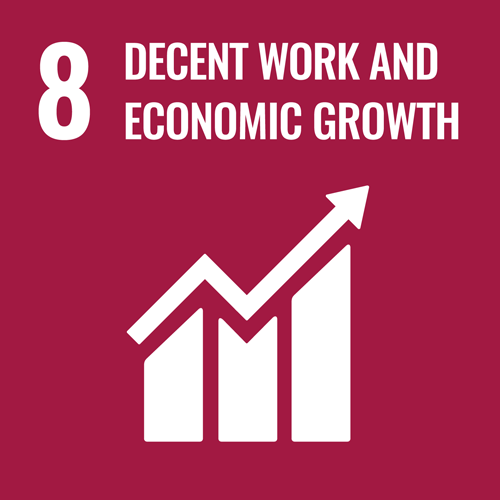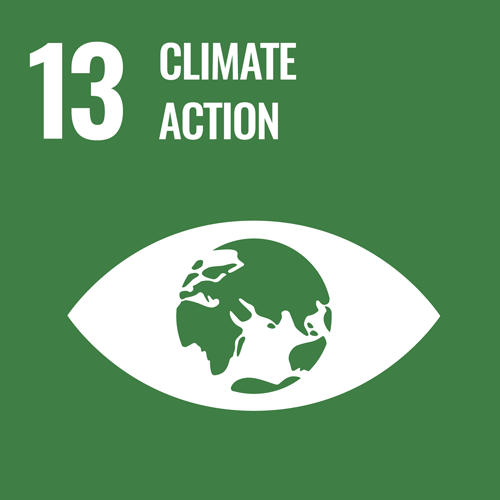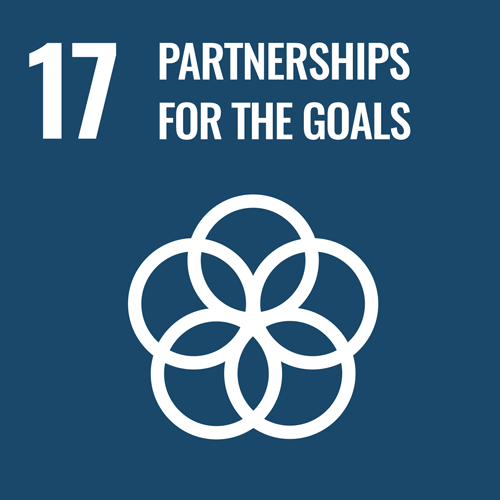
UN Global Pulse works through a network of labs to accelerate the discovery, development, and responsible use of big data and artificial intelligence innovations and policies for sustainable development, humanitarian action, and peace.
Description of Activities on AI
Project 1: Operational response simulation tool for epidemics in refugee and IDP settlements
The spread of infectious diseases presents many challenges to healthcare systems across the world. Given their density and available infrastructure, refugee and internally displaced person (IDP) settlements can be particularly susceptible to the dangers of disease spread.
Since the beginning of 2020, we have been working with public health decision-makers to seek to understand how COVID-19 spreads in these settlements. We initially focussed our efforts on the Cox’s Bazar settlement in Bangladesh, working with teams from UNHCR and WHO, and have since performed modeling of other settlements around the world. Our model simulates the movements and interactions of each individual in the settlement, incorporating information about family structures and demographic attributes, to understand how COVID-19 might spread under various intervention strategies and scenarios.
During the height of the pandemic we worked on simulating the effects on public health interventions in settlements under different scenarios and assumptions. We are now focussing on robustly understanding plausible excess mortality rates in the Cox’s Bazar settlement given newly available data collected by Community Health Workers. In addition, we are developing new methods for the collection of data on contact patterns between individuals in settlements – a crucial input to many epidemiological models, and an important data point for understanding disease transmission routes. We are currently working towards publishing, to the best of our knowledge, the first set of contact matrices for a refugee settlement.
With almost 80 million forcibly displaced people in the world, we hope that this work will inspire more modeling groups to focus on these vulnerable populations, which have been traditionally under-served by such efforts, to ensure no one is left behind. To this end, we have also been working with 18 different institutions, both from inside and outside the UN system, to form a community of practice around disease modeling in refugee and IDP settlements. This collaboration has led to a report documenting shared challenges as well as a global call to action.
Project 2: Using Social Media Tools to Monitor and Fight the COVID-19 Infodemic
This project consists of two core components. First, in partnership with the WHO we have been conducting ongoing social media listening exercises in the Africa region. The data is explored and analyzed with the help of a third-party platform but we have developed a custom classifier to categorize mentions as positive or negative from the perspective of the WHO. UN Global Pulse has produced over 40 reports to assist WHO AFRO in monitoring its brand and understanding the conversations associated with COVID-19 and poliovirus.
Second, in collaboration with WHO we are supporting a team from Stanford University which aims to test interventions to reduce vaccine hesitancy among social media users. Machine learning will be used to segment users into different vaccine hesitancy types based on their responses to an online chatbot survey, and a contextual bandits experiment will be used to dynamically assign personalized treatments to reduce vaccine hesitancy according to the user type.
Project 3: A computational framework for predictive modeling of refugee and IDP movements
Predicting forced displacement is an important undertaking of many humanitarian aid agencies, which must anticipate flows in advance in order to provide vulnerable refugees and Internally Displaced Persons (IDPs) with shelter, food, and medical care. While there is a growing interest in using machine learning to better anticipate future arrivals, there is little standardized knowledge on how to predict refugee and IDP flows in practice. Researchers and humanitarian officers are confronted with the need to make decisions about how to structure their datasets and how to fit their problem to predictive analytics approaches, and they must choose from a variety of modeling options. In an academic paper and an accompanying set of practitioner-focused “modeling cards”, we attempt to facilitate a more comprehensive understanding of this emerging field of research by providing a systematic model-agnostic framework, adapted to the use of big data sources, for structuring the prediction problem.
Project 4: PulseSatellite: A collaboration tool using human-AI interaction to analyse satellite imagery
Humanitarian response to natural disasters and conflicts can be assisted by satellite image analysis. In a humanitarian context, very specific satellite image analysis tasks must be done accurately and in a timely manner to provide operational support. PulseSatellite is a collaborative satellite image analysis tool which leverages neural network models that can be retrained on-the-fly and adapted to specific humanitarian contexts and geographies. The tool grew out of a long standing collaboration with UNOSAT which began by building an AI model for counting structures in refugee and IDP settlements. This was then expanded to a web-based toolkit – PulseSatellite – that can be easily adapted to other remote sensing applications and which allows for the incorporation of models created by other users. Currently, we have three models loaded into the system – one that allows users to map structures in refugee settlements, a roof density detection model (e.g. for slum mapping), and a flood mapping application. PulseSatellite is now open for use by other UN agencies.
Project 5: Online radio monitoring for public health social listening and beyond
Radio remains the most reliable and affordable medium of accessing and sharing information in most of the developing world. Indeed, studies have shown that radio remains more prevalent as a means of communication in many parts of the world than social media. Since 2019, UN Global Pulse has worked with the WHO to explore the use of data from radio talk shows to signal early warnings of health risks and health-related matters. We have developed a radio monitoring pipeline which can ‘listen’ to online radio stations, transcribe the audio using machine learning speech-to-text models, and analyse the content using a series of NLP methods for display in a frontend dashboard. The dashboard was designed to be used by infodemic managers and decision makers to inform public health interventions and communication strategies. However, we aim to convert it into a generally applicable radio mining tool that can be used in a variety of settings.
Project 6: Imagining post-Covid-19 UN: foresight for organizational realignment and adaptation
Through its SG Lab Futures Initiative, UN Global Pulse fostered a strategic foresight exercise and dialogue to frame the role of the UN post-COVID-19 through scenarios and future visioning. The activity leveraged partnerships with two private sector entities to access AI tools as a backbone for foresight research, including scenario building to support the UN leadership in accessing the futures and foresight capacity.
The purpose of the exercise is to systematically analyze the driving forces and future trends underpinned by the COVID-19 pandemic, synthesizing them into alternative futures scenarios. The scenarios provided a framework for discussing implications for the UN long-term, including country-level operations.
Project 7: Understanding population movement related to COVID-19 border closures
UN Global Pulse and UNHCR are working to calculate and anticipate the number of displaced persons a) that have already crossed the Brazil-Venezuela border and b) that can potentially cross in order to understand their need for humanitarian support and overall strengthen protection efforts. This project consists of: (i) a queue modeling tool for simulating border crossings under different conditions, (ii) a nowcasting effort to calculate the amount of urban population and potentially identify interest in population movements to Brazil using big data sources, and (iii) predictive models for forecasting future arrivals/population movements.
Project 8: Ukraine response – Data Science Cell
In response to the Ukraine crisis there were many actors in the data science space who were providing support and performing analysis to inform the response efforts of the UN. Early in the crisis, we initiated a Data Science Cell to bring together entities from across the UN system to coordinate and collaborate on these topics. The cell has grown to over 60 members from over 15 institutions. The cell also has three subgroups: population estimation (facilitated by UNHCR and IOM); socioeconomic impacts (facilitated by the World Bank-UNHCR Joint Data Center on Forced Displacement); and situational awareness (facilitated by UNDP). These subgroups are currently being used as spaces for focused interagency collaboration on these topics.
Project 9: Data Science Cell subgroup – situational awareness
Situational awareness can be broadly defined as the “knowledge, understanding and anticipation of a situation through monitoring and reporting of current events, analysis and predictive assessments” (2019 DPO JOCs). As part of the data science cell, one of the three subgroups is looking at understanding and developing data science methods for improved situational awareness during a crisis, based on our experience in responding to the Ukraine crisis. We are currently focussed on damage assessment, conflict monitoring and understanding the affected geography in the first month and then the first six months of a crisis. We hope to produce a literature review of current methods, conduct an analysis of where gaps in this literature exist, and work towards developing methods to address these gaps. This subgroup is facilitated by UNDP, and UN Global Pulse is a member of the group.
Project 10: Spotlight Initiative – Mining Gender Perceptions from Public Radio Discussions
UNGP in Kampala is using its AI-powered public radio social listening tool to mine data on perceptions around Gender Based Violence (GBV), Violence Against Women and Girls (VAWG), Harmful Practices (HP), Sexual Reproductive Health Rights (SRHR), and Violence Against Children (VAC) in Uganda. This data source complements perception surveys but provides the present state of affairs and the evolving context of violence against women and girls in the community to allow for timely and targeted interventions.
Project 11: Developing Ethical AI Frameworks and Data Exchanges for Uganda and Ghana
AI and other emerging technologies present opportunities for the achievement of national priorities and to increase national and regional welfare. To realize these opportunities, and to safeguard against risks and potential harms, key foundations need to be put in place, such as access to data (a.o., to train AI), and the development and use of emerging technologies need to be guided by ethical rules and principles. UNGP has been supporting the Government of Ghana and the Government of Uganda on developing solutions to address these two issues. This support has led to the development, in each country, of a Roadmap for an Ethical AI Framework informed by the local social and societal context, and a Roadmap for the development of Community-Centric Data Exchanges at the national level.














